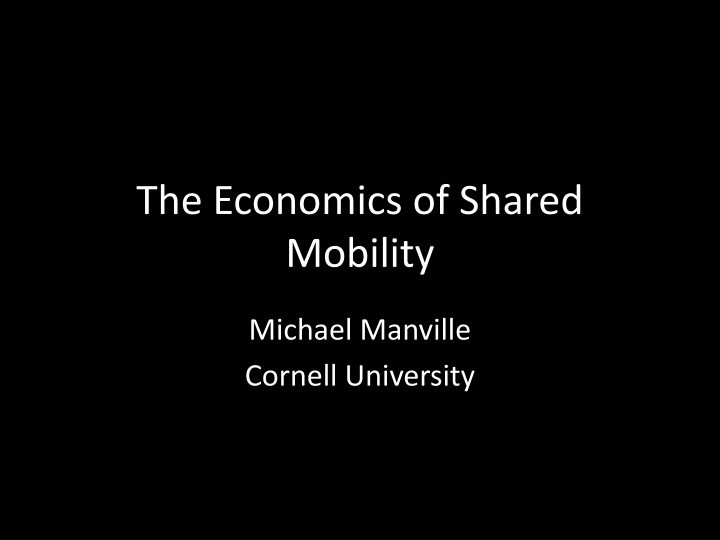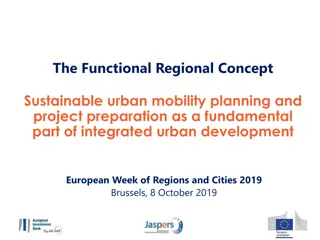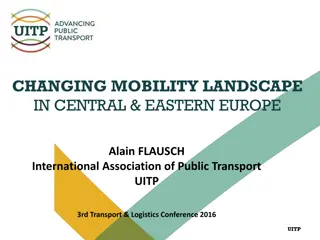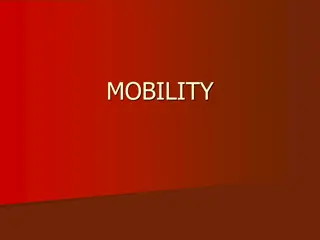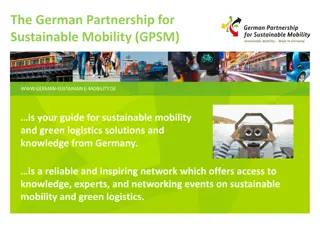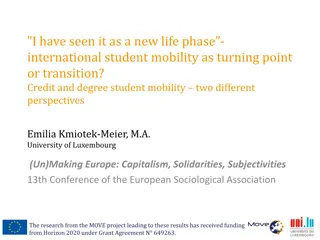Economics of Shared Mobility: Challenges and Opportunities
Shared mobility presents a spectrum of options from hitchhiking to Transportation Network Companies (TNCs), revolutionizing the way we commute. This text delves into the economics of shared mobility, discussing the challenges like information coordination, negotiation, and trust, along with the impact of regulations and the rise of TNCs. Explore how surge pricing works and the implications for the taxi industry amidst changing regulatory landscapes.
Download Presentation

Please find below an Image/Link to download the presentation.
The content on the website is provided AS IS for your information and personal use only. It may not be sold, licensed, or shared on other websites without obtaining consent from the author.If you encounter any issues during the download, it is possible that the publisher has removed the file from their server.
You are allowed to download the files provided on this website for personal or commercial use, subject to the condition that they are used lawfully. All files are the property of their respective owners.
The content on the website is provided AS IS for your information and personal use only. It may not be sold, licensed, or shared on other websites without obtaining consent from the author.
E N D
Presentation Transcript
The Economics of Shared Mobility Michael Manville Cornell University
The Basic Problem How to get a ride from someone else? A problem of information Coordination: will rider and driver be in same place? Negotiation: Can they agree on terms? Trust: Do rider and driver want to share a vehicle?
A Spectrum of Shared Mobility Hitchhiking: high information costs across the board Dispatch taxi: costs fall for riders, but requires large upfront costs for drivers Street Hail Taxis: Reduces upfront costs, pushes some information costs back on riders
Some Common Taxi Regulations Quantity controls Limited number of vehicles allowed Price controls fares set by authorities Location controls Cabs can t pick up fares in neighboring cities Combined with a dispatch market that naturally tends toward monopoly, can lead to poor service and particularly shortages
Why TNCs Thrive Peer-to-Peer app can reduce information costs and upfront entry costs Driver provides the vehicle App removes need for dispatch service Provides map showing vehicle progress Shows driver picture and ratings Cashless transaction, digital footprints for trip Information gleaned from all app users goes into setting real-time prices that can minimize shortages
Why Surge Pricing Works No price controls No quantity or location controls Flexible employment means large pool of potential drivers on reserve Lets rising prices increase supply, not just reduce demand
What Happens to the Taxi Industry? Depends on regulatory response, and extent to which market has unmet demand for trips If TNCs remain less regulated than taxis, and the demand for rides is fixed, TNCs could cannibalize taxi business In medallion markets: lost capital, lower leases Lost earnings for cab drivers, possibly made up by switching to TNC work Full-time driving becomes a less viable occupation
Other Scenarios TNCs are regulated like dispatch taxis Puts cabs on an even footing, but might undermine the flexibility that consumers like Rides-for-hire market grows TNCs could thrive without cannibalizing taxi driver revenue (but might harm medallion value) Dispatch taxi regulation is reduced More cabs, fewer location controls, flexible prices Taxis can compete on service, but especially in medallion markets owners might feel this is unfair
Could TNCs Become Monopolists? Uber and Lyft have market power Less likely they will be able to restrain competition Low entry barriers, again People can drive for both firms
A Final Wild Card: The Mental Math of TNC Driving How heavily does depreciation weigh in the calculations of TNC drivers? If people underestimate depreciation costs, they may overestimate their real wage As vehicles begin to wear out, will we see adjustments in people s willingness to drive?
